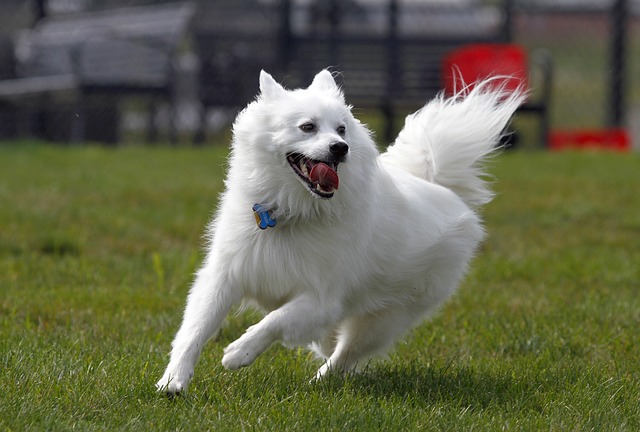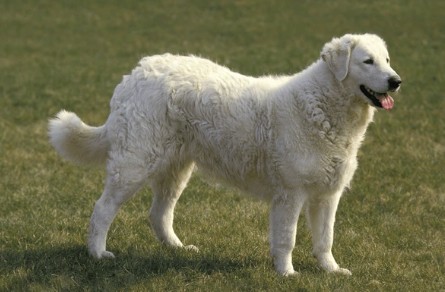Canine Cardiovascular Disease
(Heart Disease)
Research, Resources & Education
This website is based on research and is NOT created to diagnose your pet.
Each animal is an individual and may exhibit symptoms in a different way.
It is advised that you ALWAYS CHECK WITH YOUR VETERINARIAN for a proper diagnosis and treatment plan.
Table of Contents
Cardiovascular Disease
Heart disease can be defined as any abnormality of the heart. It encompasses a wide range of conditions, including congenital abnormalities and disorders of physical structure, function, or electrical activity.
Symptoms include Coughing and difficulty breathing, Exercise intolerance, Weakness and/or collapse, Weight loss, Lethargy, Swelling or bloating of the abdomen (belly), Stunted growth (puppies)
Treatment includes limiting exercises, medications, surgery and diet changes, such as lowering sodium intake.

Suggested Breeds for OFA Evaluations
Some Dogs that are at Risk due to Genetic Predisposition
The Orthopedic Foundation of Animals objective is to “To collate and disseminate information concerning orthopedic and genetic diseases of animals.” This includes a cardiac disease database and suggested evaluations. The breeds below can be at risk for certain cardiac diseases and OFA suggests evaluations that may be needed.
Please click link above for more information.
Congenital Cardiac Disease (OFA Database)
Congenital Cardiac Disease OFA – Orthopedic Foundation for Animals
Congenital heart disease – in dogs is a malformation of the heart or great vessels. The lesions characterizing congenital heart defects are present at birth and may develop more fully during perinatal and growth periods. Many congenital heart defects are thought to be genetically transmitted from parents to offspring; however, the exact modes of inheritance have not been precisely determined for all cardiovascular malformations. The most common congenital cardiovascular defects can be grouped into several anatomic categories. These anatomic diagnoses include:
- Malformation of the atrioventricular valves
- Malformation of the ventricular outflow leading to obstruction of blood flow
- Defects of the cardiac septa (shunts)
- Abnormal development of the great vessels or other vascular structures
- Complex, multiple, or other congenital disorders of the heart, pericardium, or blood vessels














































































What is Cardiovascular Disease?
Heart Disease in Dogs (MSD Veterinary Manual)
Heart Disease in Dogs – MSD Veterinary Manual
Slightly more than 10% of the animals examined by a veterinarian have some form of cardiovascular disease. Unlike diseases of many other organ systems, cardiovascular diseases generally do not go away but almost always become more serious and may lead to death. In addition, cardiovascular diseases may be more difficult to detect and quantify because the heart cannot be seen and is protected so well by the rib cage.
- Heart disease can be defined as any abnormality of the heart. It encompasses a wide range of conditions, including congenital abnormalities and disorders of physical structure, function, or electrical activity.
- It can be classified by various methods, including whether the disease was present at birth or not (that is, congenital or acquired), causes (for example, infectious or degenerative), duration (for example, long- or short-term), clinical status (for example, left heart failure, right heart failure, or biventricular failure), by physical structure malformation (for example, ventricular septal defect), or by electrical disturbance (for example, atrial fibrillation).
- Heart failure is any heart abnormality that results in failure of the heart to pump enough blood to meet the body’s needs. It is not a specific disease; rather, it is a condition in which congestion or an abnormal accumulation of fluid, decreased blood flow to the body, and/or abnormally low blood pressure arise as the final consequence of severe heart disease.
What Is Heart Disease and Heart Failure? (AKC)
What Is Heart Disease and Heart Failure? AKC
Heart disease is defined as any abnormality of the heart, whether due to structural, functional, or electrical abnormalities.
Heart disease can be categorized as follows:
- Valvular disease, in which the heart valves don’t open or (more often) close, properly
- Myocardial disease, in which the heart muscle pumps too weakly or (less often) doesn’t relax adequately
- Arrhythmias, in which the heart beats too erratically, too fast, or too slow
- Vascular disease, in which the blood vessels interfere with blood flow
- Shunts, in which there are abnormal openings between the left and right side of the heart, or between the lungs and the body
- Abnormally high or low levels of blood
- Cardiac parasites, such as heartworms; or infections
Heart disease in turn can lead to heart failure.
Heart failure manifests in two main ways:
- Low output heart failure, in which the heart can’t pump enough blood to oxygenate the organs.
- Congestive heart failure, in which fluid leaks from dammed up blood into tissues, causing fluid build-up in the lungs or abdomen.
Cardiovascular Disease Videos
YouTube Videos that help explain Cardiovascular Disease in Dogs
Disclaimer:
This is for research only and Lost Temple Pets does not endorse any video presented on this website.
It is advised that you ALWAYS CHECK WITH YOUR VETERINARIAN for a proper diagnosis and treatment plan.
Types of Heart Disease
What Types of Heart Disease do Dogs Get? (VCA Animal Hospital)
What types of heart disease do dogs get? VCA Animal Hospital
Heart disease is a serious medical condition in dogs, cats, and humans. In general terms, heart disease in dogs can be divided into two categories: congenital and adult onset.
In congenital disease, the heart defect is present at birth. Signs of congenital disease are often seen at a young age, but in some cases, it can go undetected for many years.
- Congenital heart disease may be caused by a developmental problem that causes malformation of the heart as the embryo develops.
- This type of congenital heart disease may affect only a single pup in the litter.
- It may also involve a genetic or hereditary disorder; in which case the problem may develop in more than one pup in the litter.
Most adult-onset heart disease occurs due to degeneration of the mitral valves over time, resulting in abnormal function.
- Some adult-onset heart disease can be due to a hereditary condition that progresses as the dog ages, eventually causing problems.
- The cause of most types of adult-onset heart disease is unknown, although genetics and lifestyle (weight, physical activity, and diet) may play an important role.
Abnormalities
Abnormalities of the Cardiovascular System (MSD Veterinary Manual)
Abnormalities of the Cardiovascular System – MSD Veterinary Manual
The following abnormalities of the cardiovascular system can lead to heart disease:
- The heart valves fail to close or open properly (valvular disease)
- The heart muscle pumps too weakly or relaxes inadequately (myocardial disease)
- The heart beats too slowly, too rapidly, or irregularly (arrhythmia)
- The blood vessels offer too great an interference to blood flow (vascular disease)
- There may be openings between chambers of the left side and right side of the heart (cardiac shunts) or abnormal blood flow between the body and the lungs (extracardiac shunts)
- There is too little, or too much blood compared with the ability of the blood vessels to store that blood
- There is parasitism of the cardiovascular system, such as heartworm disease.
Signs & Symptoms
What are the Signs of Heart Disease in Dogs? (VCA Animal Hospital)
What are the signs of heart disease in dogs? VCA Animal Hospital
Most dogs display no clinical signs until the disease is advanced. Often, it may be detected when a veterinarian hears a heart murmur during a physical examination.
The most common signs of heart disease in dogs are:
- coughing and difficulty breathing
- exercise intolerance (easily tired on walks or when playing)
- weakness and/or collapse
- weight loss
- lethargy
- swelling or bloating of the abdomen (belly)
- stunted growth (puppies
Diagnosis and Testing
Diagnosing Congestive Heart Failure in Dogs - CVCA
Diagnosis – CVCA
If you have concerns about your dog and heart disease, it’s best to reach out to a pet cardiologist near you to get a clear diagnosis and treatment plan.
- Physical exam– including listening to the heart and lungs, checking your dog’s blood pressure and maybe a blood test.
- Electrocardiogram (ECG) – to measure electrical activity of your dog’s heart to find heart rhythm problems.
- Echocardiogram – ultrasound by a board-certified vet cardiologist to view your dog’s heart in great detail. This test is the gold standard for diagnosing heart disease in dogs.
Some of the More Commonly Used Diagnostic Tools Include: (AKC)
Some of the More Commonly Used Diagnostic Tools Include: AKC
- Auscultation, or listening with a stethoscope, can detect murmurs that indicate valvular disease, and may also indicate a possible arrhythmia. Taking the pulse, usually at the femoral artery, is often used in conjunction with auscultation.
- X-rays can detect an enlarged heart, or if the pericardial sac is filled with fluid
- An electrocardiogram (ECG) records the electrical activity of your dog’s heart to detect heart rhythm problems. This is done with your dog awake, and the results can be sent remotely for reading by a specialist.
- A Holter monitor is basically a portable ECG that your dog wears for 24 hours at home, allowing a longer period to detect rhythm problems and correlate them with your dog’s activity.
- A cardiologist can perform an echocardiogram, which uses ultrasound to visualize the heart valves, how much the heart contracts, thickness of the heart walls, and regurgitation at the valves
- Blood and urine tests can detect heartworms, heart disease markers, or the condition of other organs that may affect, or be affected by, the heart.
- Blood pressure can be measured but is more difficult to take in dogs compared to humans.
Treatment
How is Heart Disease Treated? (VCA Animal Hospital)
How is Heart Disease Treated? VCA Animal Hospital
The specific treatment will depend on the cause of the heart disease.
- Some congenital heart abnormalities in the dog, such as patent ductus arteriosus, can be surgically corrected. When a young puppy is diagnosed with heart disease, diagnostic testing will help determine the prognosis and whether medical treatment is necessary.
- Adult-onset heart disease is often treated with medications to support heart function and treat abnormal heart rhythms. It is essential that the instructions for your dog’s heart medication are followed closely.
- For drugs given more than once daily, doses should be spread out over the day as evenly as possible.
- Some heart medications can have serious adverse effects if stopped suddenly, so it is important that your dog receives the medication regularly and that prescription refills are requested ahead of time.
How Is Heart Disease Treated and Medications? (AKC)
How Is Heart Disease Treated and Medications? AKC
Most treatments are aimed at controlling signs, rather than curing the condition.
- Limited exercise is generally suggested for most conditions. The goal is to prevent the heart from becoming overburdened.
- Low-sodium cardiac diets are important to prevent fluid build-up in congestive heart failure. The extent of sodium restriction depends on the severity of the condition. A cardiologist is in the best position to advise you about diet.
- Surgical intervention has generally been limited to implantation of pacemakers for dogs with irregular or slow heart rates, and surgery or balloon therapies for PDA. That’s changing though.
Some commonly used heart medications are:
- Furosemide, which helps congestive heart failure by removing excess fluid, especially from the lungs. It makes your dog urinate more, but also increases thirst.
- Enalapril and benazepril are angiotensin-converting enzyme (ACE) inhibitors that reduce blood pressure and increase the heart’s output
- Sotalol or mexiletine help stabilize arrhythmias
- Pimobendan, sold under the brand name Vetmedin, helps heart muscles contract. It’s often prescribed for DCM.
- Spironolactone is a mild diuretic that seems to increase life spans in dogs with mitral valve disease
- Digoxin may be used for short term improvement of heart function
- Vetoquinol is a new drug for dogs used alongside other cardiac drugs to help decrease fluid build-up in the lungs from congestive heart failure
- Supplements with ingredients such as taurine and L-carnitine may improve heart function
References
References
AKC (American Kennel Club) – Heart Disease in Dogs: Signs, Symptoms, Treatments
By Caroline Coile, PhD – Updated: Sep 26, 2024
https://www.akc.org/expert-advice/health/heart-disease-in-dogs/
CVCA – Heart Disease in Dogs
https://www.cvcavets.com/canine-heart-diseases/
MSD Veterinary Manual – Heart Disease in Dogs
By Suzanne M. Cunningham, DVM, DACVIM-Cardiology, Department of Clinical Sciences, Cummings School of Veterinary Medicine, Tufts University;
Kursten V. Roderick, DVM, Tufts University
Reviewed/Revised Jun 2018 | Modified Sept 2024
OFA – Orthopedic Foundation for Animals – Cardiac Database
https://ofa.org/diseases/cardiac-disease/
VCA Animal Hospital – Heart Disease in Dogs
By Tammy Hunter, DVM
https://vcahospitals.com/know-your-pet/heart-disease-in-dogs
VIDEOS
Vetwisdom – Canine Heart Anatomy Simplified
https://www.youtube.com/watch?v=wTvMCEaqujU
The Schwarzman Animal Medical Center – Congenital Heart Disease in Dogs and Cats
https://www.youtube.com/watch?v=snY5sEbA6-w
Veterinary Channel – Veterinary Cardiology: The 12 Most Common Congenital Heart Diseases In Dogs
https://www.youtube.com/watch?v=jwsCpRsZUhA
Dogtor Pete – Congestive Heart Failure in Dogs | Everything You NEED To Know | Veterinarian Explains
Cardiac/Breed Chart
| BREED | Atrial septal defect (ASD) | Chronic mitral valvular disease (CMVDz) | Dilated cardiomyopathy (DCM) | Mitral valvular dysplasia (MVD) | Patent ductus arteriosus (PDA) | Pulmonic stenosis (PS) | Subaortic stenosis (SAS) | Tricuspid valvular dysplasia (TVD) | |
|---|---|---|---|---|---|---|---|---|---|
| Affenpinscher | Patent ductus arteriosus (PDA) | ||||||||
| Afghan Hound | Dilated cardiomyopathy (DCM) | Mitral valvular dysplasia (MVD) | |||||||
| Airedale Terrier | |||||||||
| Akita (American) | |||||||||
| Alaskan Malamute | |||||||||
| American Eskimo, Toy and Standard | |||||||||
| American Foxhound | |||||||||
| American Pitt Bull Terrier | |||||||||
| American Staffordshire Terrier | |||||||||
| American Water Spaniel | |||||||||
| Anatolian Shepherd Dog | |||||||||
| Australian Cattle Dog | |||||||||
| Australian Shepherd | |||||||||
| Australian Terrier | |||||||||
| Basenji | |||||||||
| Basset Hound | Pulmonic stenosis (PS) | ||||||||
| Beagle | Pulmonic stenosis (PS) | ||||||||
| Bearded Collie | |||||||||
| Beauceron | |||||||||
| Bedlington Terrier | |||||||||
| Belgian Groenendael | |||||||||
| Belgian Malinois | |||||||||
| Belgian Tervuren | |||||||||
| Bernese Mountain Dog | |||||||||
| Bichon Frise’ | Patent ductus arteriosus (PDA) | ||||||||
| Black and Tan Coonhound | |||||||||
| Black Russian Terrier | |||||||||
| Bloodhound | |||||||||
| Boerboel | |||||||||
| Border Collie | |||||||||
| Border Terrier | |||||||||
| Borzoi | |||||||||
| Boston Terrier | Pulmonic stenosis (PS) | ||||||||
| Bouvier des Flandres | Subaortic stenosis (SAS) | ||||||||
| Boxer | Atrial septal defect (ASD) | Dilated cardiomyopathy (DCM) | Pulmonic stenosis (PS) | Subaortic stenosis (SAS) | |||||
| Briard | |||||||||
| Brittany | |||||||||
| Brussels Griffon | |||||||||
| Bull Terrier | Mitral valvular dysplasia (MVD) | ||||||||
| Bull Terrier, Miniature | |||||||||
| Bulldog, English | Pulmonic stenosis (PS) | Subaortic stenosis (SAS) | |||||||
| Bullmastiff | |||||||||
| Cairn Terrier | |||||||||
| Canaan Dog | |||||||||
| Cane Corso (Italian Mastiff) | |||||||||
| Caucasian Shepherd | |||||||||
| Cavalier King Charles Spaniel | Chronic mitral valvular disease (CMVDz) | Patent ductus arteriosus (PDA) | |||||||
| Chesapeake Bay Retriever | |||||||||
| Chihuahua | Chronic mitral valvular disease (CMVDz) | Patent ductus arteriosus (PDA) | Pulmonic stenosis (PS) | ||||||
| Chinese Crested | |||||||||
| Chinese Shar-Pei | |||||||||
| Chow Chow | Pulmonic stenosis (PS) | ||||||||
| Clumber Spaniel | |||||||||
| Cocker Spaniel (American) | Chronic mitral valvular disease (CMVDz) | Dilated cardiomyopathy (DCM) | Patent ductus arteriosus (PDA) | Pulmonic stenosis (PS) | |||||
| Collie, Rough / Smooth Coat | Patent ductus arteriosus (PDA) | ||||||||
| Curly Coated Retriever | |||||||||
| Dachshund | Chronic mitral valvular disease (CMVDz) | ||||||||
| Dalmation | |||||||||
| Dandie Dinmont Terrier | |||||||||
| Doberman Pinscher | Atrial septal defect (ASD) | Dilated cardiomyopathy (DCM) | |||||||
| Dogo Argentino | |||||||||
| Dogue de Bordeaux (Mastiff) | |||||||||
| English Cocker Spaniel | Dilated cardiomyopathy (DCM) | Pulmonic stenosis (PS) | |||||||
| English Foxhound | |||||||||
| English Setter | |||||||||
| English Springer Spaniel | Dilated cardiomyopathy (DCM) | Patent ductus arteriosus (PDA) | |||||||
| English Toy Spaniel AKA King Charles Spaniel | |||||||||
| Field Spaniel | |||||||||
| Finnish Spitz | |||||||||
| Flat-Coated Retriever | |||||||||
| Fox Terrier, Smooth | |||||||||
| Fox Terrier, Toy | |||||||||
| Fox Terrier, Wire | Pulmonic stenosis (PS) | ||||||||
| French Bulldog | |||||||||
| German Pinscher | |||||||||
| German Shepherd | Dilated cardiomyopathy (DCM) | Mitral valvular dysplasia (MVD) | Patent ductus arteriosus (PDA) | Subaortic stenosis (SAS) | Tricuspid valvular dysplasia (TVD) | ||||
| German Shorthaired Pointer | Subaortic stenosis (SAS) | ||||||||
| German Wirehaired Pointer | |||||||||
| Glen of Imaal Terrier | |||||||||
| Golden Retriever | Dilated cardiomyopathy (DCM) | Subaortic stenosis (SAS) | |||||||
| Gordon Setter | |||||||||
| Great Dane | Dilated cardiomyopathy (DCM) | Mitral valvular dysplasia (MVD) | Subaortic stenosis (SAS) | Tricuspid valvular dysplasia (TVD) | |||||
| Great Pyrenees | |||||||||
| Greater Swiss Mountain Dog | |||||||||
| Greyhound | |||||||||
| Harrier | |||||||||
| Havanese | |||||||||
| Ibizan Hound | |||||||||
| Irish Setter | Tricuspid valvular dysplasia (TVD) | ||||||||
| Irish Terrier | Patent ductus arteriosus (PDA) | ||||||||
| Irish Water Spaniel | |||||||||
| Irish Wolfhound | Dilated cardiomyopathy (DCM) | ||||||||
| Italian Greyhound | |||||||||
| Japanese Chin | |||||||||
| Keeshond | Patent ductus arteriosus (PDA) | Pulmonic stenosis (PS) | |||||||
| Kerry Blue Terrier | Patent ductus arteriosus (PDA) | ||||||||
| Komondor | |||||||||
| Kuvasz | |||||||||
| Labrador Retriever | Dilated cardiomyopathy (DCM) | Patent ductus arteriosus (PDA) | Pulmonic stenosis (PS) | Tricuspid valvular dysplasia (TVD) | |||||
| Lakeland Terrier | |||||||||
| Lhasa Apso | Chronic mitral valvular disease (CMVDz) | ||||||||
| Lowchen | |||||||||
| Maltese | Chronic mitral valvular disease (CMVDz) | Patent ductus arteriosus (PDA) | |||||||
| Manchester Terrier Toy | |||||||||
| Manchester Terrier, Standard | |||||||||
| Mastiff, English | Dilated cardiomyopathy (DCM) | Pulmonic stenosis (PS) | |||||||
| Miniature Pincher | |||||||||
| Neapolitan Mastiff | |||||||||
| Newfoundland | Dilated cardiomyopathy (DCM) | Patent ductus arteriosus (PDA) | Pulmonic stenosis (PS) | Subaortic stenosis (SAS) | |||||
| Norfolk Terrier | |||||||||
| Norwegian Buhund | |||||||||
| Norwegian Elkhound | |||||||||
| Norwich Terrier | |||||||||
| Nova Scotia Duck Tolling Retriever | |||||||||
| Old English Sheepdog | Atrial septal defect (ASD) | Dilated cardiomyopathy (DCM) | Tricuspid valvular dysplasia (TVD) | ||||||
| Otterhound | |||||||||
| Papillon | Chronic mitral valvular disease (CMVDz) | ||||||||
| Parsons Russell Terrier | |||||||||
| Pekingese | Chronic mitral valvular disease (CMVDz) | ||||||||
| Petit Basset Griffon Vendeen (PBGV) | |||||||||
| Pharaoh Hound | |||||||||
| Plott Hound | |||||||||
| Pointer | Subaortic stenosis (SAS) | ||||||||
| Polish Lowland Sheepdog | |||||||||
| Pomeranian | Chronic mitral valvular disease (CMVDz) | Patent ductus arteriosus (PDA) | |||||||
| Poodle, Miniature | Chronic mitral valvular disease (CMVDz) | Patent ductus arteriosus (PDA) | |||||||
| Poodle, Standard | Atrial septal defect (ASD) | Patent ductus arteriosus (PDA) | |||||||
| Poodle, Toy | Chronic mitral valvular disease (CMVDz) | Patent ductus arteriosus (PDA) | |||||||
| Portuguese Water Dog | Dilated cardiomyopathy (DCM) | ||||||||
| Presa Canario | |||||||||
| Pug | |||||||||
| Puli | |||||||||
| Pyrenean Shepherd | |||||||||
| Rhodesian Ridgeback | |||||||||
| Rottweiler | Subaortic stenosis (SAS) | ||||||||
| Saluki | |||||||||
| Samoyed | Atrial septal defect (ASD) | Pulmonic stenosis (PS) | Subaortic stenosis (SAS) | ||||||
| Schipperke | |||||||||
| Schnauzer, Miniature | Chronic mitral valvular disease (CMVDz) | Pulmonic stenosis (PS) | |||||||
| Schnauzer, Giant | Pulmonic stenosis (PS) | ||||||||
| Schnauzer, Standard | |||||||||
| Scottish Deerhound | Dilated cardiomyopathy (DCM) | ||||||||
| Scottish Terrier | |||||||||
| Sealyham Terrier | |||||||||
| Shetland Sheepdog | Patent ductus arteriosus (PDA) | ||||||||
| Shiba Inu | |||||||||
| Shih Tzu | Chronic mitral valvular disease (CMVDz) | ||||||||
| Siberian Husky | |||||||||
| Silky Terrier | |||||||||
| Skye Terrier | |||||||||
| Soft-Coated Wheaten Terrier | |||||||||
| Spinone Italiano | |||||||||
| St. Bernard | Dilated cardiomyopathy (DCM) | ||||||||
| Staffordshire Bull Terrier | |||||||||
| Sussex Spaniel | |||||||||
| Swedish Vallhund | |||||||||
| Tibetan Mastiff | |||||||||
| Tibetan Spaniel | |||||||||
| Tibetan Terrier | |||||||||
| Tosa | |||||||||
| Vizsla | |||||||||
| Weimaraner | |||||||||
| Welsh Corgi, Cardigan | Patent ductus arteriosus (PDA) | ||||||||
| Welsh Corgi, Pembroke | Patent ductus arteriosus (PDA) | ||||||||
| Welsh Springer Spaniel | |||||||||
| Welsh Terrier | |||||||||
| West Highland White Terrier | Chronic mitral valvular disease (CMVDz) | Pulmonic stenosis (PS) | |||||||
| Whippet | |||||||||
| Wirehaired Pointing Griffon | |||||||||
| Yorkshire Terrier | Chronic mitral valvular disease (CMVDz) | Patent ductus arteriosus (PDA) | |||||||
| Spanish Mastiff | |||||||||
| Treeing Walker Coonhound | |||||||||
| Barbet | |||||||||
| Cirneco dell'Etna | |||||||||
| Broholmer | |||||||||
| Leonberger | |||||||||
| Rat Terrier | |||||||||
| Xoloitzcuintli | |||||||||
| Dutch Shepherd |